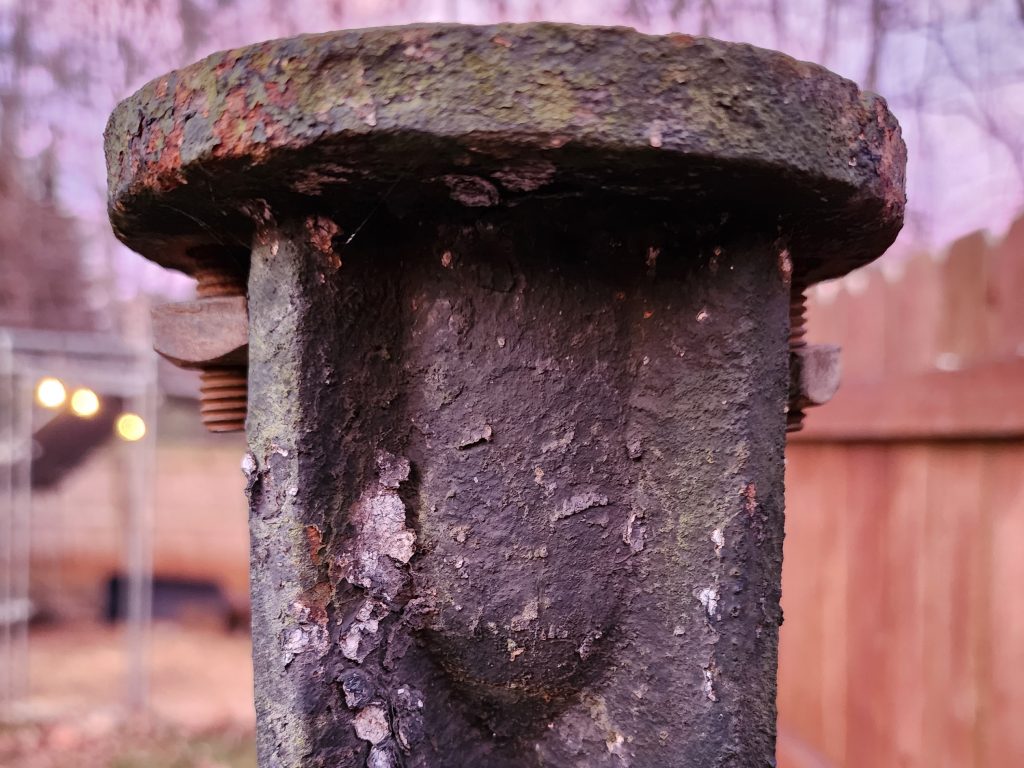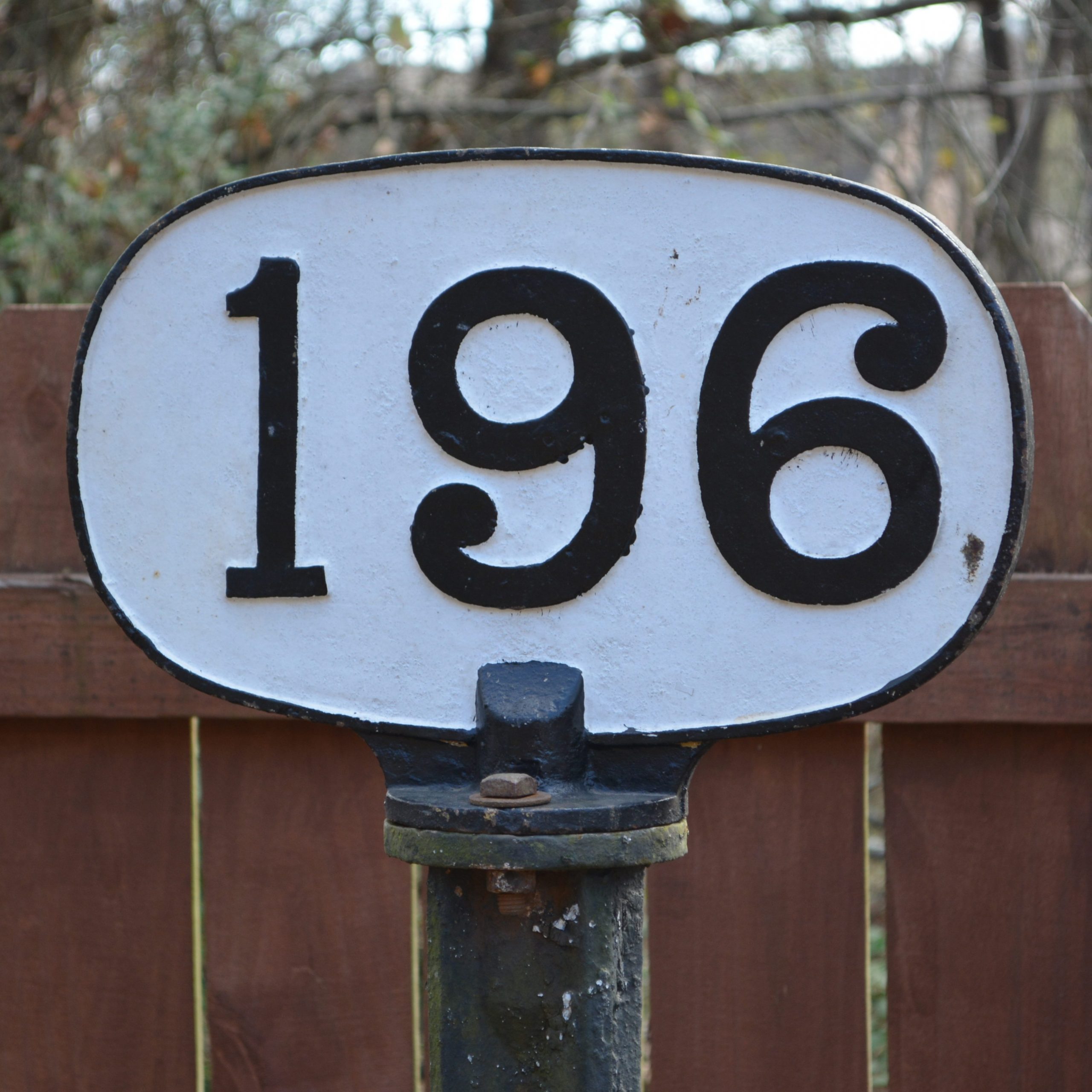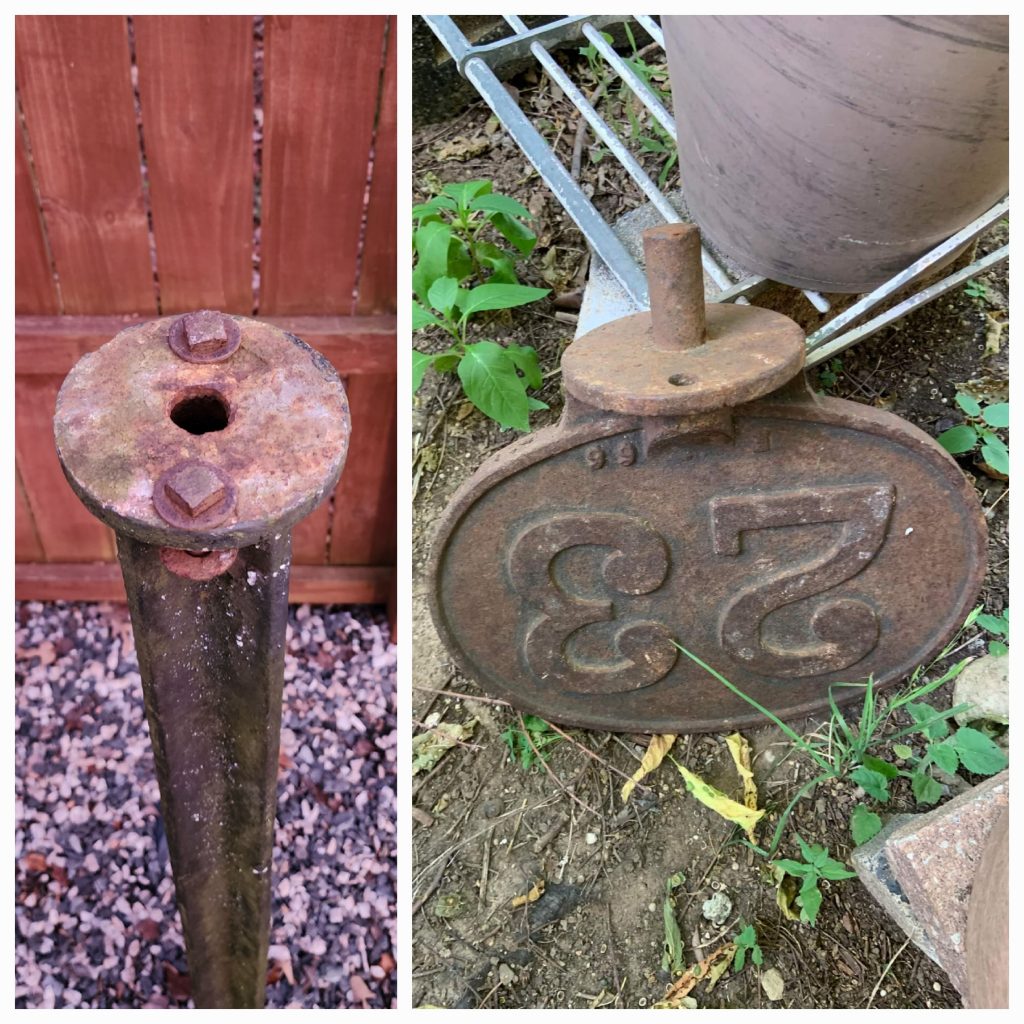This is a post I made in a Southern Railway collectors group detailing how I determined the raised-number milepost were Richmond & Danville. It is here to spread light on my research for this determination. It has also been modified slightly to match the layout of a webpage vs a Facebook post.
For years, I’ve noticed a “bulb” at the tops of mileposts along certain former Southern Railway lines (Figure 1). Only recently, after the purchase of a raised number cast iron milepost (Figure 2), did I start to piece together some interesting bits of information. I believe, based on the information I have found, that the raised number mileposts are not Southern, but actually Richmond & Danville. Here is the process I used to come to this conclusion:
First, I matched the signs to the posts. This was achieved through acknowledging 3 major points:
1) The bulb matched up perfectly on the outside to the size of the bulb at the base of the milepost sign. (Picture 3)
2) The cast numbers are both very similar with the post being E-220 and the sign being E-68. Note that ALL other Southern cast numbers I have seen have an R prefix.
3) Most importantly, the signs that haven’t been broken actually have a small metal stub on the base that is made to slip into the hole at the top of the bulbed posts. (Picture 4)
Knowing now that the posts and signs matched together, I started researching the rail lines where the posts were used and the lines where they weren’t. In North Carolina, a few major ones were the following:
Bulbed Posts:
– WNCRR (S and T Lines)
– A&S (W-Line)
– NCRR (NS Mainline)
Non-Bulbed Posts:
– OR&C (SB-Line)
– A&Y (CF-line)
Immediately, I noticed a common trend. The lines with bulbed posts were all former R&D lines and those without were acquired by the Southern after its formation. This was already very convincing evidence, but I noticed one final detail that set it in stone for me. The North Carolina Midland Railroad (L-Line) runs from Winston-Salem, passes through Mocksville, then ends in Mooresville. The line was actually completed in two different sections opening about 8 years apart. The first 26.15 mile long section from Winston-Salem to Mocksville opened in 1891, while the remaining 27.47 miles from Mocksville to Mooresville were completed in 1899. On the line, the 0-26 mileposts are bulbed while the remaining 27-53 are not. This, to me, is by far the most convincing evidence as it shows that the difference in posts had nothing to do with the different lines, but everything to do with the time frame of purchase/construction.
With all this information in mind, I would say it is safe to assume that the bulbed style posts and signs are in fact Richmond & Danville and, at the latest, were cast in 1894 making them a minimum of 128 years old. If anyone wants to add anything, has any questions, or notices any flaws, please feel free to comment below. I’ve really enjoyed looking into this and would love nothing more than to continue discussing it! ALSO, if anyone owns or has access to any R&D or Southern standard plans (Excluding 1901, 1915, and 1945), please reach out to me. Thanks!
All information on history of former North Carolina railroads was pulled from Carolana at https://www.carolana.com/…/nc_rrs_southern_railway.html




